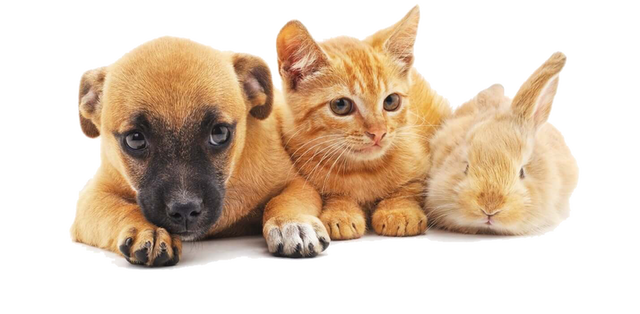Panel discussion on...
Pet food
The influx of human food trends innovating petfood industry
In developed countries the growing humanization of pets is one aspect shaping the evolving pet food market. Pet owners are spending on their companion animal the same way as parents spend on their children. According to Euromonitor International’s Voice of the Consumer Lifestyle Survey 71% of pet owners worldwide consider their pets to be family member. (1)
Consumers are increasingly interested in fresh natural alternatives for their pets, but dry petfood is always performing better having some advantages on other growing categories, including customized petfoods and for purchasing online. Dry pet manufacturers have turned to innovation and are bringing new kinds of ingredients onto the market often influenced by human trends, so that they can offer increasing numbers of products with wellness and natural claims.
Nevertheless a product formulated for a human diet is not necessarily appropriate for animal consumption.
Which human food trends have been transferring into the pet food world?
Topics like sustainability, organic, clean label ingredients, novel protein sources are on the rise in the petfood industry.
With plant based pet food novel protein have been a key focus when taking inspiration from human food trends. The interest in novel proteins is visible in multiple pet food formulations, such as pea, potato and hemp protein. Peas, lentils, chickpeas and beans have been used as raw material in petfood for over 2 decades, their inclusion has increased over the last years due to the popularity of grainfree diets entering the petfood market in order to replace more conventional grains like rice and corns.
Insect protein has been making a big splash in the pet food and human food worlds for several years now. Though still a nascent category of University of California, San Diego (according to Mintel data, insect protein claims account for less than 1% of global pet food product launches) its potential to serve as an alternative protein source, alleviating shortages of other protein ingredients as well as promising to be more sustainable, has captured a lot of attention, curiosity, investment, research and media coverage. (2)
Even Superfoods are now found in some petfood formulas: scientifically speaking, there is no official definition of a superfood, other than to say it is a food that offers high levels of desirable nutrients, linked to provide some similar benefits to pets as they do to humans and most considered safe in the proper amount, preventing disease and sickness. Petfood industry now looks for banana, pumpkin, carrots, kale, green beans, spinach (etc ) to add in some formulas for the same reason as they are used in human foods.
Even algae has become very popular in pet nutrition thanks to their functional benefit and sustainability: traditionally pet companies add fish oil to increase omega 3s level. Today nearly 90% of the world’s marine fish stocks are exploited and companies are looking for alternatives to support their nutritionals and sustainability needs.
The new trend is to switch to microalgae as new superfood providing protein and lipids:
Scientists have long known that current agricultural practices are a major source of greenhouse gas emissions and environmental pollution, which threaten long-term food security for billions of people around the globe. Now, a team of researchers from the University of California, San Diego (UCSD) has argued that University of California, San Diego – a term encompassing the thousands of microscopic algal species and other photosynthetic organisms found in aquatic environments, such as cyanobacteria – could be a new kind of “superfood” due to their high protein and nutrition content. (3)
In human food there is a quest for novel proteins including cell based products. Cell based meat has been unstoppable since its regulatory approval for sale in Singapore in 2020. According to MCKInsey the market could be worth by 2030 globally $25 billion – This provides an opportunity for the petfood industry to explore ‘cultured meat‘ grown in a laboratory as a sustainable alternative compared to current farming practices, so far there is only one pet food company, a start-up based in London ‘God Dog Food’ which develops cell-cultured meat for pets, including sustainable ethical meat in their petfood formulations.
Over the last few years the importance of personalized solutions in the gut health space is ever increasing. Probiotics in supplement for improving health is an active area of research in human ever since recent studies showed that the brain affects gut health, and the gut can also affect brain health. The communication system between the gut and the brain is called the gut-brain axis.
The more we learn about the gut microbiome, the more we realize how vital it is to the health and well-being of our dogs and cats and ourselves!
But why probiotics for pet? Just like humans, the majority of a pet’s immune system resides in his gut. Gut is the largest immune organ in the body and contains approximately 70% of all immune cells. So keeping the digestive system running optimally is essential for a healthy and active life.
Until a few years ago, the probiotics we gave to our pets were in fact human probiotics, meaning they were never tested to see if they remained viable in the species they were consumed by. All species have a different gut pH balance, so if bacteria cannot thrive in that environment, the probiotic was not only a waste but could actually be harmful.
The veterinary research is just starting to really dive into how supplementing dogs and cats with a variety of good bacteria. At present only 6 probiotics are approved by the European Commission and registered as a feed additive for cats and dogs, that is, tested for stability, efficacy and safety in cats and dogs and therefore only these provides broad guarantees of use (4).
Finally the importance of keeping a balanced microbiome has been recognized because good immunity, means skin and coat wellness, and even brain and cognitive health.
Like in human nutrition, a veterinary diet supplemented with the right probiotics and prebiotic fibers is a key way of achieving and maintaining a normal, healthy microbial population in dog or cat’s GI tract.
So we can conclude that as the bond between humans and our pets deepens, the quest for healthier , more sustainable and technologically advanced petfood will continue to drive the industry forward and also contribute to a brighter and more sustainable future for all.
References and notes
- Liseeth Galvis, Humanisation a Key Driver of Pet Product Sales, Euromonitor International, 8 Nov 2022
- Debbie Philipps Donaldson, Sustainability: top trend for human food and petfood, Petfood industry Magazine, 4th Nov, 2021
- Andrei Ionescu, Algae may be the future of sustainable “superfoods”, journal of Frontiers in Nutrition, Earth.com, 19th Jan 2023
- https://ec.europa.eu/food/food-feed-portal/screen/feed-additives/search

Panelists









